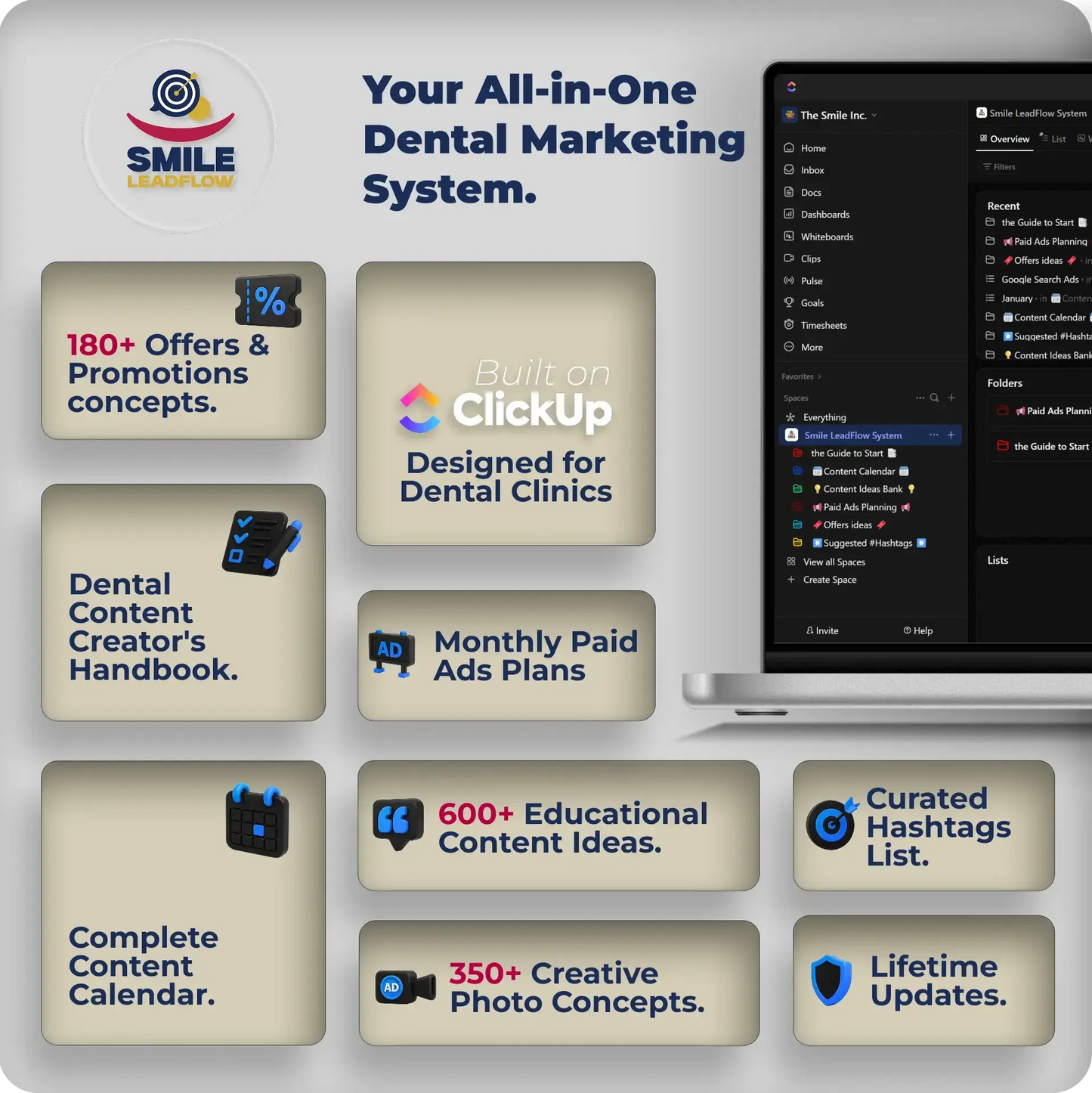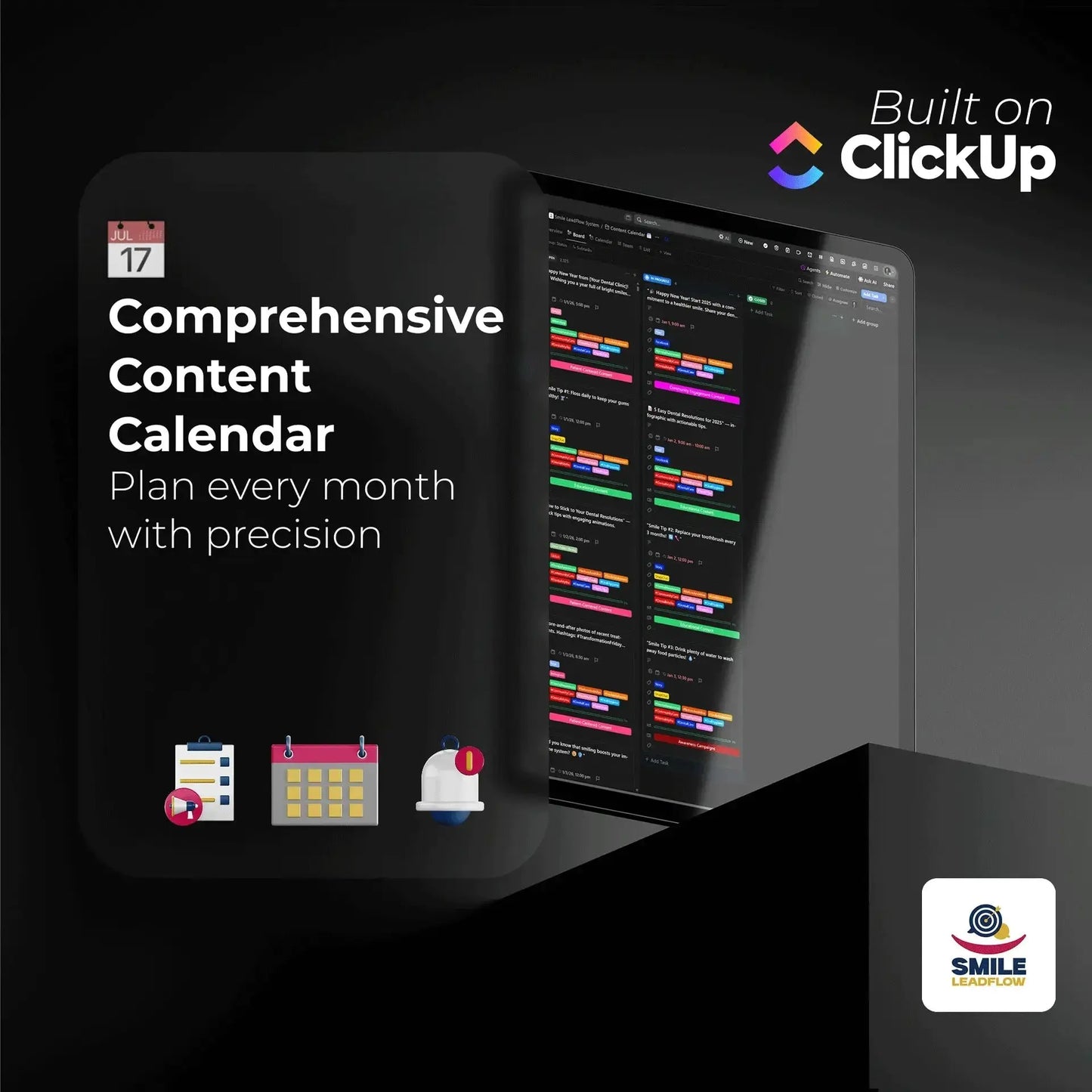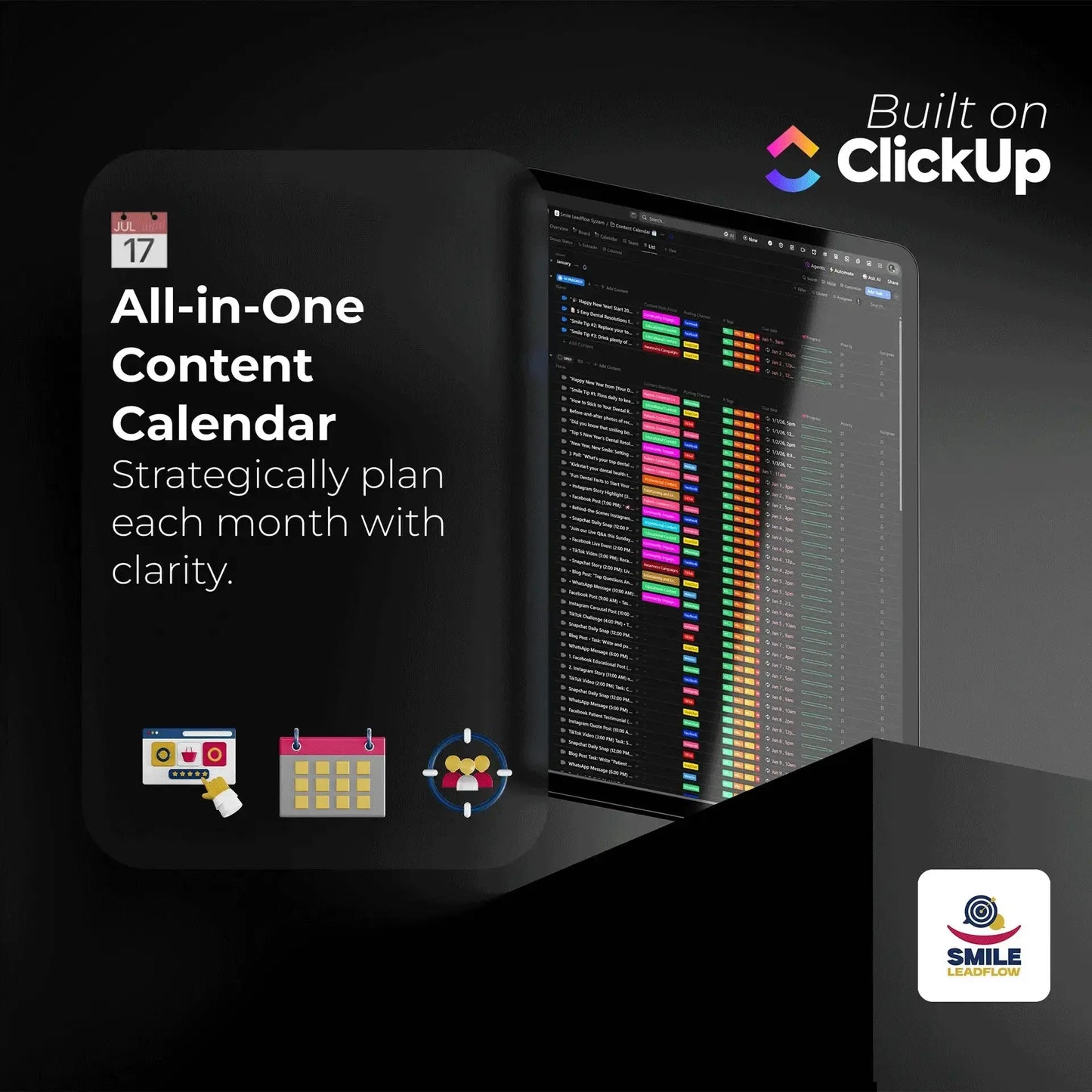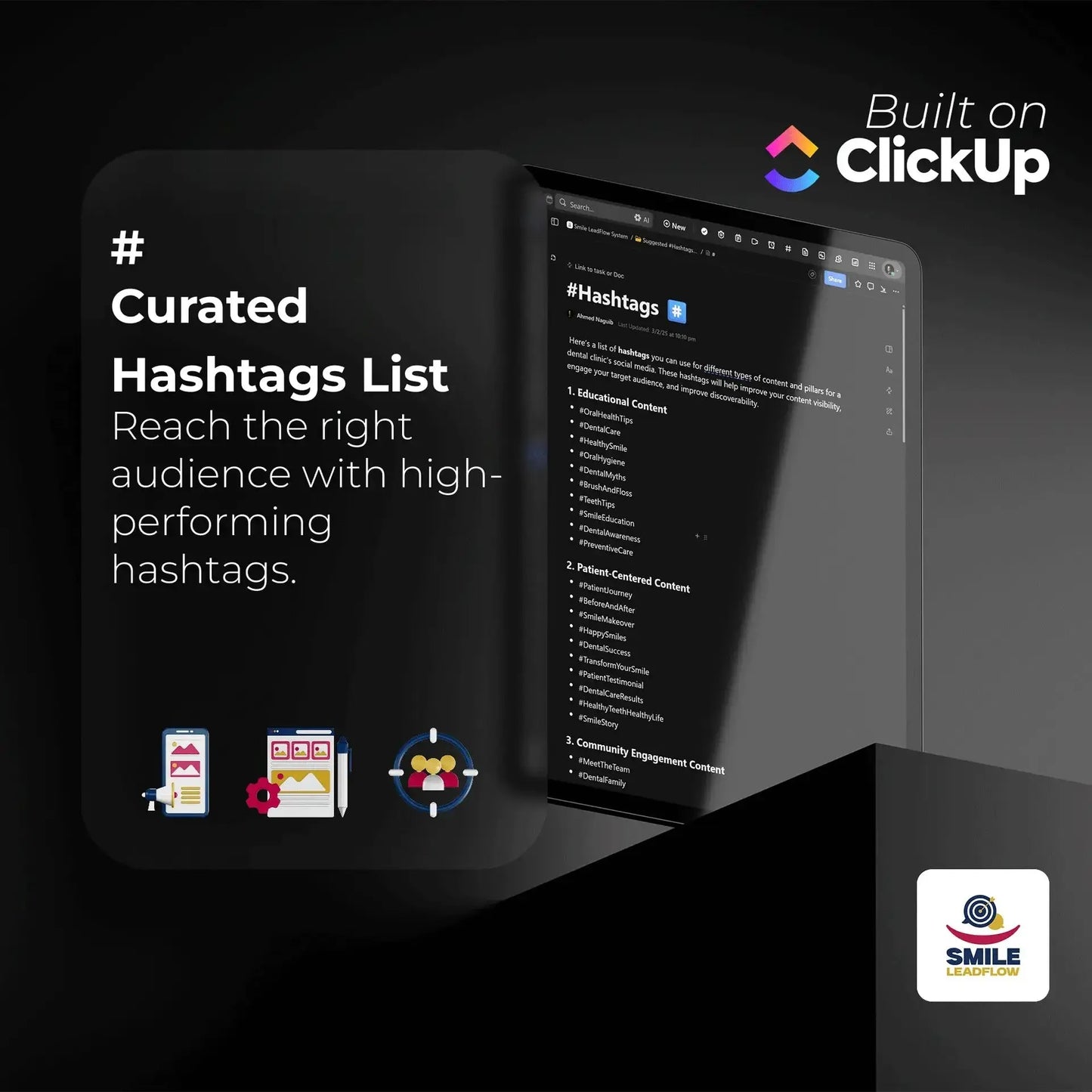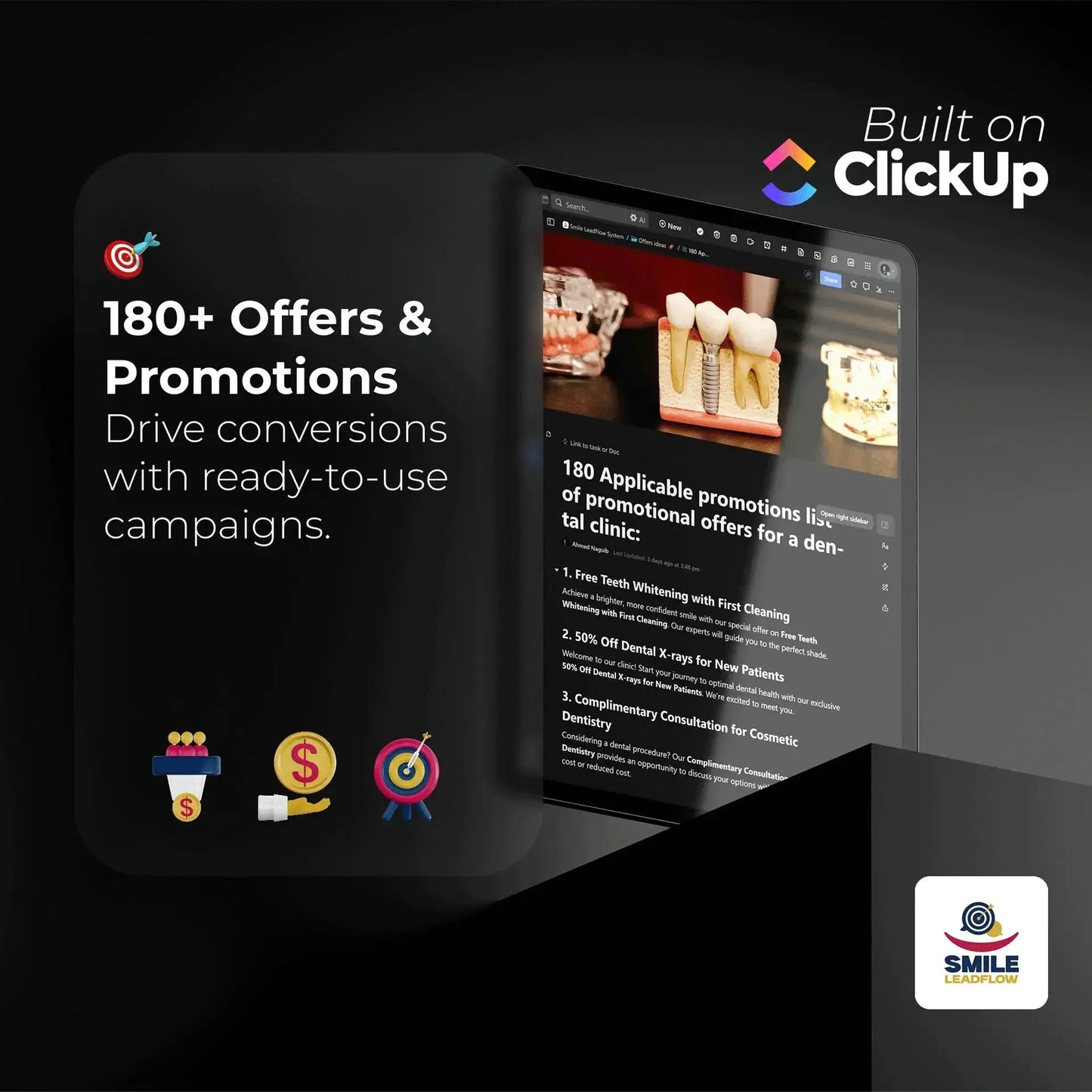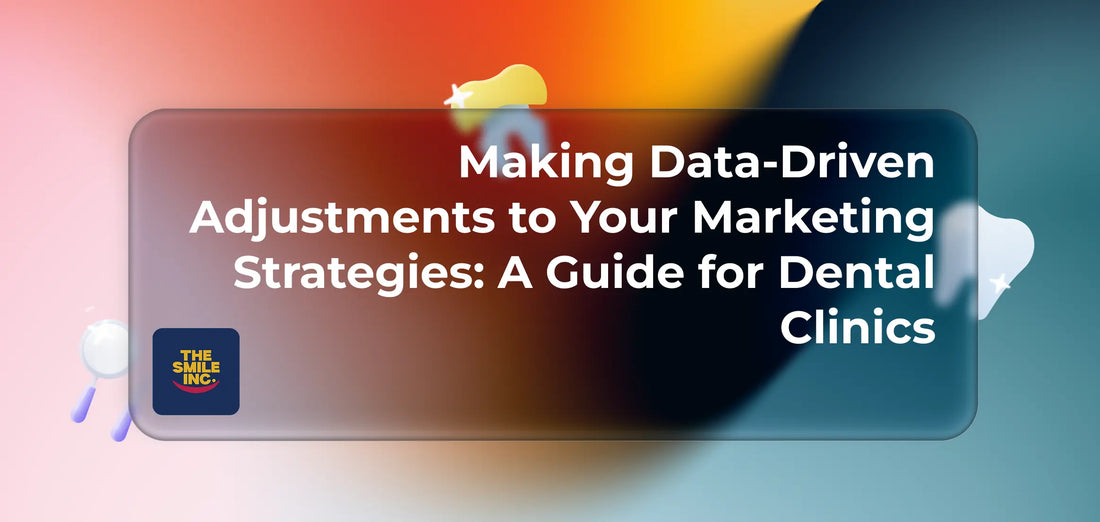
Making Data-Driven Adjustments to Your Marketing Strategies: A Guide for Dental Clinics
Ahmed NaguibShare
As a dentist, your day is a whirlwind of patient care, staff management, and the intricate art and science of dentistry. On top of it all, you’re expected to be a marketing guru to keep your appointment book full. You’ve likely tried launching a promotion—spending time and money on ads and social media—only to be met with disappointing silence. You're left asking, "What went wrong?"
If this sounds familiar, you're not alone. In today's competitive landscape, old-school marketing "hunches" are no longer enough to grow a thriving practice. The secret to effective dental clinic marketing isn't about spending more; it's about marketing smarter.
This guide will walk you through the essentials of data-driven marketing. We’ll skip the dense jargon and give you a clear, step-by-step framework to understand what’s working, what’s not, and how to make simple adjustments that get more dental patients through your doors.
What Is Data-Driven Marketing, Really?
Data-driven marketing is the process of using real performance numbers—not guesswork—to make smart decisions about how to market your dental practice.
Instead of launching a campaign and just hoping for the best, you use data to see exactly how people are responding in real time. This method enables you to focus on reaching your ideal patients by understanding their needs and preferences, ensuring you connect with the right audience.
- 📈 Optimize Your Campaigns: Fine-tune your efforts for higher conversion rates and a better return on your investment (ROI).
- 💬 Enhance Patient Engagement: Personalize your messages and offers based on real feedback and interactions.
Data-driven marketing is about moving from speculation to certainty based on data.
Your 4-Step Guide to Data-Driven Dental Marketing

Here’s a simple, four-step process to gather, analyze, and act on data to make your marketing campaigns more effective.
Step 1: Gather Your Marketing Clues (The Right Data)
First, you need to collect the right information. Here are the key areas to watch.
📊 Your Dental Website SEO Goldmine
Your website is like the online representation of your dental practice, acting as a virtual storefront. Tools like Google Analytics are essential for monitoring its health.
- Key Metrics to Track:
- Website Traffic: How many people are visiting your site?
- Bounce Rate: What percentage of visitors leave after viewing only one page? A high bounce rate can signal a poor user experience.
- Conversion Rate: How many visitors complete a goal, like booking an appointment or filling out a contact form? This metric is crucial for understanding the effectiveness of your SEO strategies in attracting potential patients to your dental practice.
- Popular Pages: Which service pages (e.g., Invisalign, Dental Implants, Teeth Whitening) get the most attention? This shows you what services to highlight in your marketing.
📱 Social Media Vital Signs
Social media serves as a vital link between your dental practice and the local community. Use built-in tools like Meta Business Suite to see what’s resonating.
- Key Metrics to Monitor:
- Engagement: Are people liking, sharing, and commenting on your posts?
- Click-Through Rate (CTR): How many users click the links to your website or booking page?
- Follower Growth: Is your audience growing steadily over time?
- Demographics: Who are your followers (age, location, etc.)? This is key for creating targeted ads.
💰 Paid Campaign Performance
If you're using Google Ads or Facebook Ads, you need to know if your money is working for you.
- Key Metrics to Measure:
- Cost per Click (CPC): What you pay each time someone clicks your ad.
- Cost per Lead (CPL): The cost to get one potential patient to book or inquire.
- Return on Investment (ROI): Is the revenue from the campaign greater than the cost?
⭐ Patient Feedback and Reviews
Your patients' feedback is a valuable source of information to understand what aspects of your practice are successful.
- Sources to Check:
- Online reviews on Google My Business and Yelp.
- Patient satisfaction surveys.
- Comments on your social media posts.
Step 2: Connect the Dots to Find Trends and Gaps
Once you have the data, it's time for the fun part: analysis. Look for patterns that tell a story.
- Understand Your Audience: Use demographic data to build a clear picture of your ideal patient. Are they young professionals seeking cosmetic dentistry or families needing routine check-ups? This knowledge helps you tailor your messaging.
- Pinpoint Underperforming Areas: Where are the leaks in your marketing funnel?
- If you have a lot of website visitors but few bookings, it could be because your dental website's SEO is bringing in traffic, but your landing page or call-to-action (CTA) isn't compelling enough for them to schedule an appointment.
- Low Social Media Engagement? Your content might not be hitting the mark. It could be time to try different topics or formats.
- Evaluate Channel Effectiveness: Discover which channels give you the best results. For practices with a significant number of high-value patients from Google searches, focusing on local dental marketing strategies and SEO can yield favorable results. If your paid ads have a low ROI, it’s time to adjust your targeting or ad creative.
Step 3: Take Action! Smart Tweaks to Promote Your Dental Clinic
Armed with insights, you can now make strategic adjustments to improve performance.
- Optimize Your Website:
- Improve Load Speed: Use Google PageSpeed Insights to make your site faster.
- A/B Test Your Pages: Experiment with different headlines, images, or button text on key pages to see what drives more conversions.
- Refine Your Social Media Strategy:
- Target Specific Audiences: Use the demographic data you collected to create highly targeted ad campaigns.
- Leverage Video Content: Post patient testimonials, office tours, or quick dental tip videos. Video content consistently garners higher levels of engagement from your audience on social media platforms.
- Adjust Your Paid Campaigns:
- Revisit Your Targeting: Refine your ad targeting based on your ideal patient profile.
- Shift Your Budget: Move your ad spend to the campaigns and ads that are performing the best.
Step 4: Measure Your Success (and Learn from Setbacks)
After making changes, it's crucial to track the results to see how the modifications affect your marketing campaigns. This is a crucial step in dental marketing for beginners and pros alike.
- Establish specific and measurable objectives to guide your marketing initiatives. For example: "Increase our website's appointment bookings by 10% in the next quarter."
- Monitor Your Progress: Regularly check your analytics to see how the changes are impacting your KPIs.
- Celebrate Wins, Learn from Losses: When a change works, fantastic! See how you can apply that learning elsewhere. If it doesn't, the data will help you understand why so you can try a different approach.
Real-World Example: A dental clinic noticed its Google Ads campaign for teeth whitening was getting lots of clicks but very few bookings. After checking their website analytics, they saw the landing page had confusing pricing and a hidden "Book Now" button. They redesigned the page with clear pricing and a prominent button. The result? A 25% increase in conversions in just two weeks.
Conclusion: The Power Is in Your Data
Utilizing data-driven adjustments is the most effective method to promote your dental clinic and guarantee sustained growth. By moving from guesswork to informed strategies, you can optimize your marketing budget, attract more of the patients you want, and build a stronger, more successful practice.
👉 Your First Actionable Step: Remember, you can start by making small changes without completely transforming everything at once. Choose a single area to concentrate on this week for your initial focus. Log into your Google Analytics and look at your most popular service page. Is the call to action clear? Could it be better? Make one small, informed tweak and watch what happens. Even small adjustments can lead to significant enhancements in your marketing results.
References:
- Google. (2023). Google Ads Help. Retrieved from https://support.google.com/google-ads
- HubSpot. (2023). CRM and Marketing Tools. Retrieved from https://www.hubspot.com
- Mailchimp. (2023). Email Marketing Campaigns. Retrieved from https://mailchimp.com












